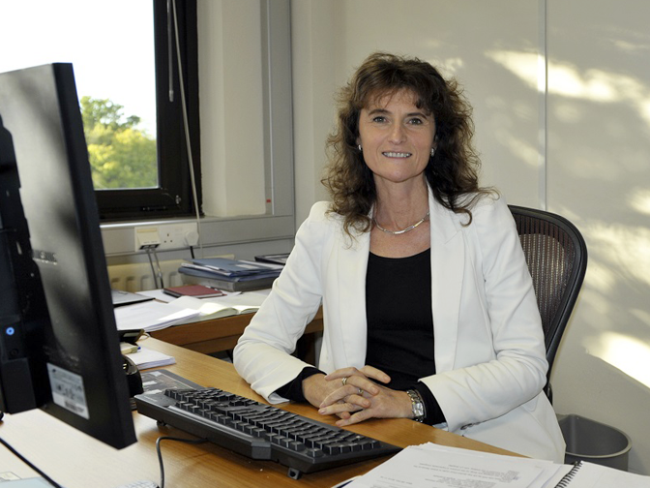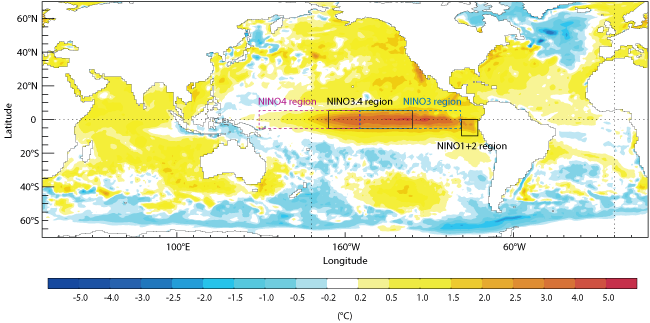

From welcoming a new Member State and launching a new model cycle to celebrating the Centre’s 40th anniversary and appointing a new Director-General, 2015 has had its fair share of big ECMWF news stories.
Other stories covered include the current exceptionally strong El Niño event, ECMWF’s implementation of EU-funded Earth observation services and the release of global climate reanalysis data.
High-profile scientific and training events at the Centre as well as major initiatives to prepare numerical weather prediction (NWP) for the next generation of supercomputers have also featured on these pages.
Some highlights are presented below, while a full list of 2015 news articles can be found in our news archive.
New Member State
On 1 January 2015, Serbia officially became ECMWF’s 21st Member State. The Centre's Director-General Alan Thorpe welcomed Serbia's accession to full membership, saying that it marks a new chapter in the collaboration between ECMWF and Serbia.

New model cycle
On 12 May, ECMWF launched a new model cycle bringing a range of improvements to its Integrated Forecasting System (IFS).
The Centre's 40th anniversary
The speakers at an event held at the Centre on 25 June to mark ECMWF’s 40th anniversary noted the “stunning” advances made in numerical weather prediction (NWP) over the last four decades and set out the challenges that lie ahead.
New Director-General
On 8 December, the President of ECMWF’s Council, Professor Gerhard Adrian, announced that Florence Rabier had been appointed as successor to Professor Alan Thorpe as ECMWF’s Director-General.

Dr Rabier is an internationally recognised expert in numerical weather prediction and is especially well known within the meteorological community for her key role in implementing a new data assimilation method (4DVar) in 1997, which was a first worldwide.
El Niño
As early as March, we noted that El Niño was “set to strengthen” although the longer term trend was uncertain. In August, the first of a series of updates said the event was likely to turn into a “very strong” one by the end of the year. Our December update confirmed that some El Niño records have been broken.

Average sea-surface temperature anomalies in November 2015. The chart shows sea-surface temperature anomalies compared to the 1981–2009 average.
Earth observation services
The first in a series of workshops to develop the EU-funded Copernicus Climate Change Service (C3S) took place at the Centre from 3 to 6 March.
In June, ECMWF used the occasion of the conference on Our Common Future Under Climate Change in Paris to explain how it will implement C3S and the Copernicus Atmosphere Monitoring Service (CAMS).

The participants in ECMWF's side event at the Our Common Future conference flew in a balloon over Paris.
In December, C3S and CAMS set out how they can support evidence-based decision-making as world leaders met in Paris to agree a new climate deal.
Workshops and training events
A training course held at ECMWF from 1 to 5 June delved deep into the methods that lie at the heart of numerical weather prediction (NWP) and Earth system modelling.
The 2015 edition of the ECMWF Annual Seminar, entitled 'Physical processes in present and future large-scale models', took place from 1 to 4 September.
Innovative uses of 3D and debates on user interaction were among the highlights of a week of events on visualisation in meteorology at ECMWF from 28 September to 2 October.

The Dutch national weather forecasting service demonstrated its use of 3D visualisations during Visualisation Week.
The question of which aspects of the weather can be predicted up to three months ahead was the subject of an international workshop held at ECMWF from 2 to 5 November.
The future of supercomputing
ESCAPE, a major project in ECMWF’s Scalability Programme, held its kick-off meeting at the Centre on 1 and 2 October. ESCAPE will develop world-class, extreme-scale computing capabilities for European operational numerical weather prediction (NWP) and future climate models.
On 16 November, a consortium including ECMWF announced the successful start of the NEXTGenIO project on input/output challenges in high-performance computing (HPC).
Reanalysis
On 16 January, ECMWF announced the release of global reanalysis data for the year 2014 on its public data server.
In April, new data confirmed that global temperatures continued to be high in the first quarter of 2015 after 2014 was one of the warmest years on record.

Differences between two-metre temperature for January–March 2015 and the 1981–2010 average for the quarter, based on the ERA-Interim reanalysis.
